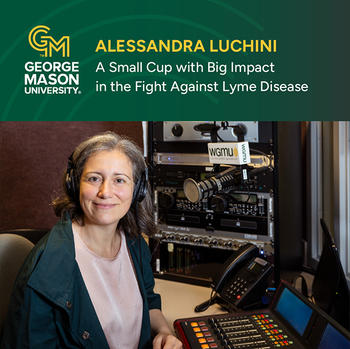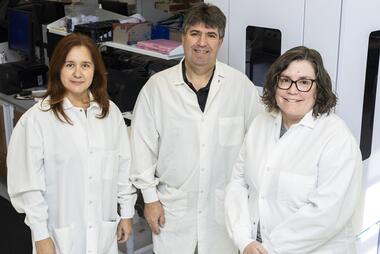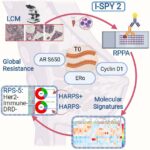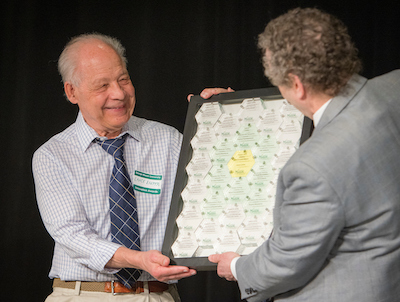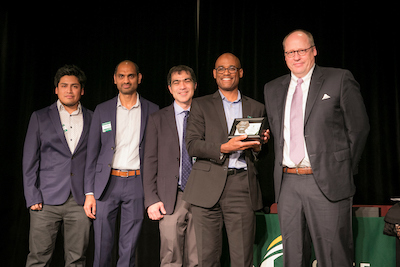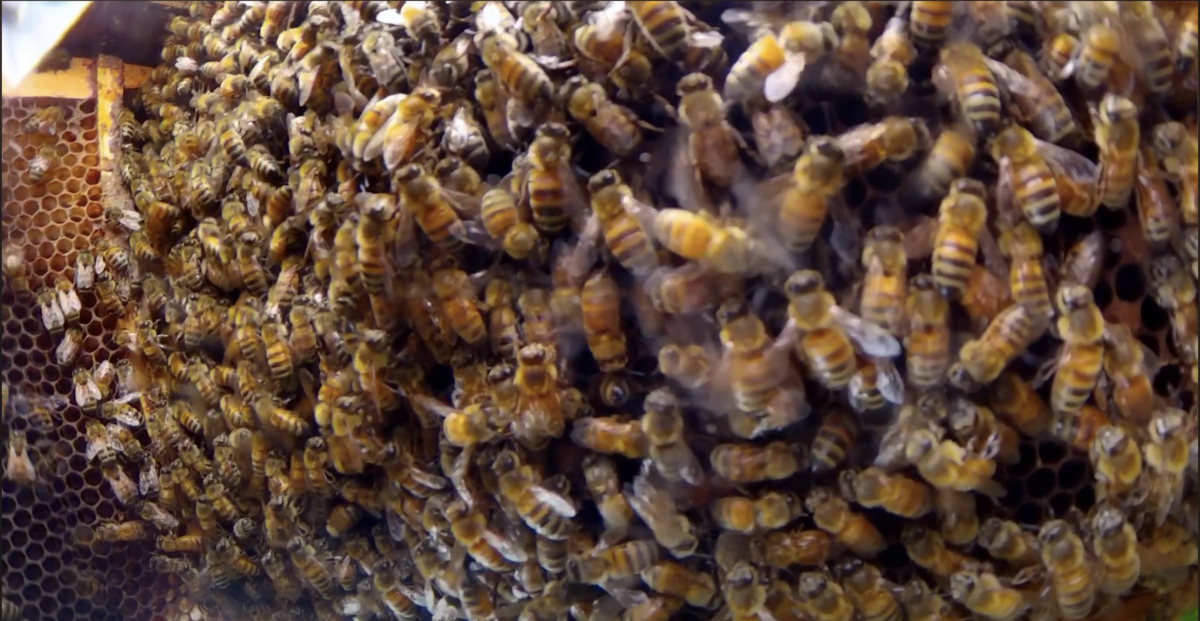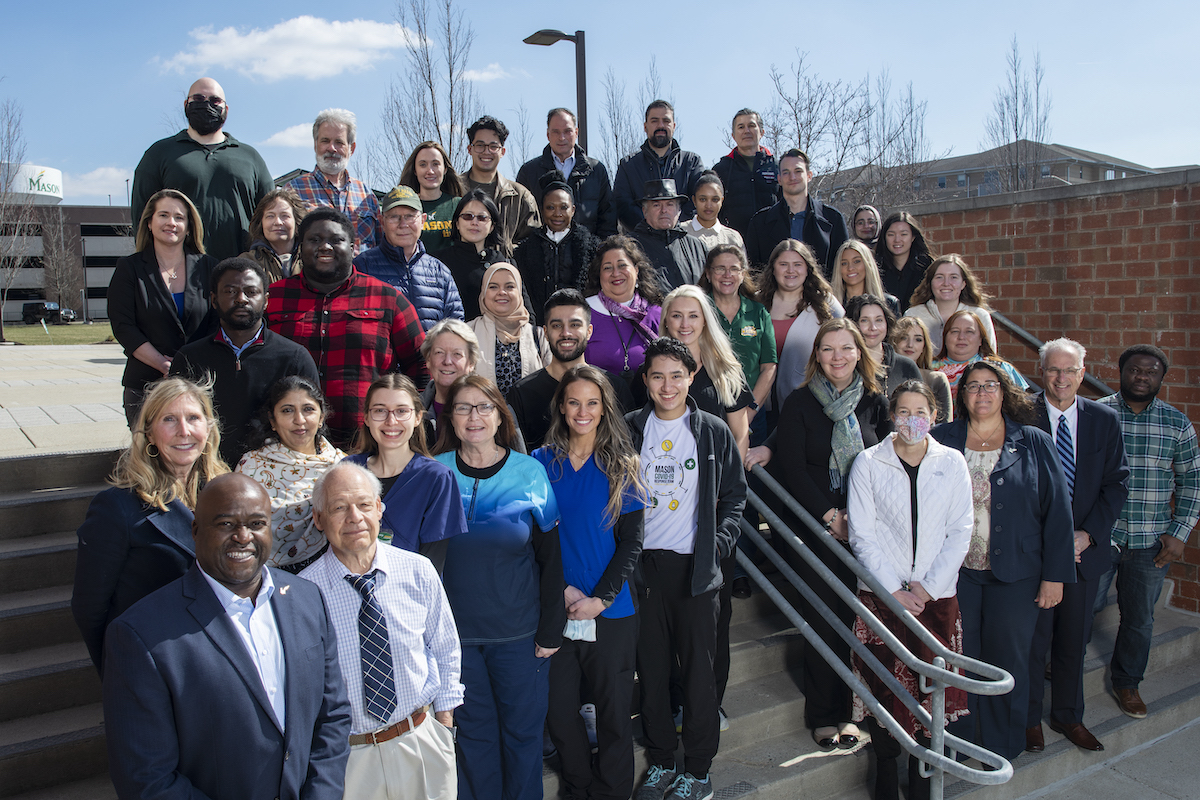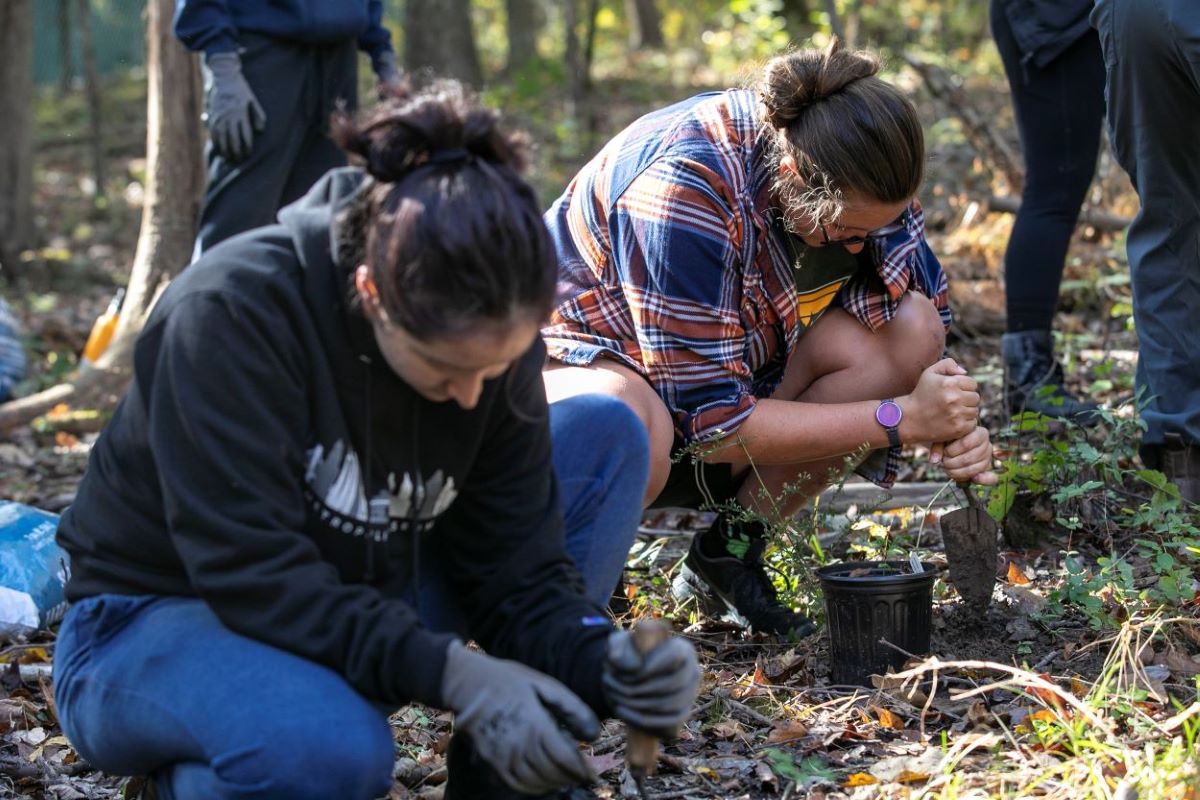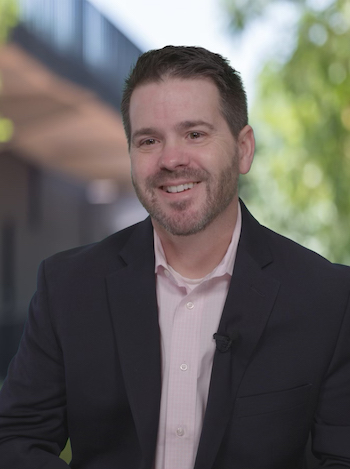George Mason University’s science, technology, engineering, and mathematics (STEM) summer camps, programs, and workshops are dedicated to inspiring the next generation of scientists and researchers with STEM-focused curriculum and hands-on learning experiences.
The camps, offered to K-12 students, are run by George Mason faculty, staff, and students from the College of Engineering and Computing (CEC) and the College of Science (COS). In addition to hands-on experience and mentorship, attendees experience life on a college campus, preparing them to enter the higher education environment.
Aspiring Scientists
The College of Science’s Aspiring Scientist Summer Internship Program (ASSIP) is one of the longest running summer STEM programs at George Mason. Nearly 400 students are participating in ASSIP this year both in person and remotely.
“ASSIP is an amazing eight-week program designed to give students more experience in the advanced labs. It runs every summer with different mentors from all over George Mason,” said Isela Gallagher, PhD Biosciences ’19, senior research scientist, Center for Applied Proteomics and Molecular Medicine (CAPMM) affiliate.
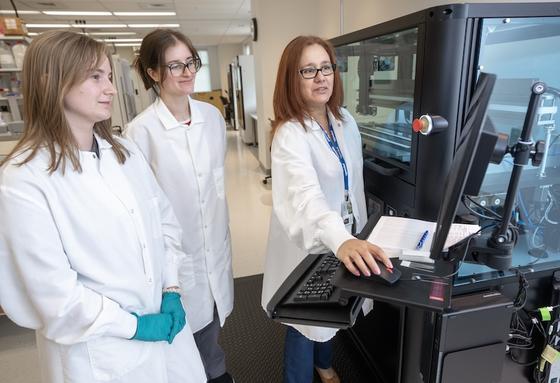
Gallagher is an ASSIP faculty mentor working with local high school students Alex Simmonds and Yelyzaveta “Liza” Kalchenko.
The rising seniors attended the Governor’s School at Innovation Park, which allowshigh school juniors and seniors to spend part of each school day experiencing life as George Masonstudents, where they heard about this opportunity to work alongside faculty mentors on a research topic of their choosing.
“We’re learning different lab techniques and working with laser capture microdissection, or LCM, and reverse phase protein arrays, or RPBA. We’re doing this work to isolate cancer cells from breast tissue samples to better research them,” explained Simmonds, who attends Forest Park High School in Woodbridge, Virginia.
Simmonds and Kalchenko are working out of the Advanced Biomedical Research Building at the Science and Technology Campus (SciTech Campus). The students will share their findings at the end of summer presentation for the program on August 7.
FOCUS
The FOCUS camp is a five-day residential camp geared toward helping middle and high school students better understand career options. It also utilizes alumni and community partners.
FOCUS was started in 2014 with four cofounders, including mathematics professor Padmanabhan Seshaiyer, forensic science professor Kelly Knight, former biology professor Claudette Davis, and George Mason alumna Danielle Craddock, MA Integrative Studies ’11, founder of Girls Inspired and Ready to Lead Inc.
This summer, FOCUS took place from July 14-18 with Craddock serving as the FOCUS program manager, while Knight serves as director of the program.
FOCUS provides positive role models and experiences with STEM that will increase students’ confidence level in their knowledge, skills, and competencies in the respective fields.
Each weekday of the camp focused on a different letter of STEM: Monday is science, Tuesday is tech, Wednesday is engineering, and Thursday is math, and on Friday, STEM professionals speak to the students through an interactive panel as well as do a poster presentation.
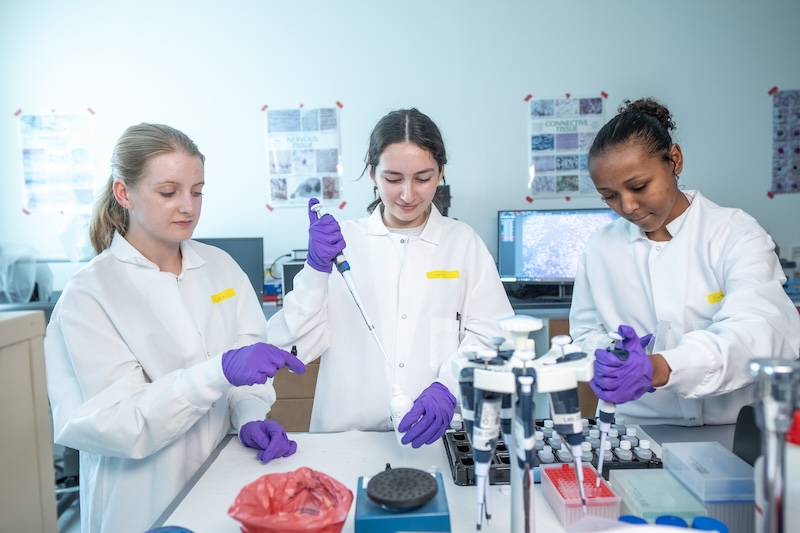
“The students do all types of workshops from coding robotic arms to crime scene investigation, to building rollercoasters,” Knight said. “They also engage in team sessions where we focus on team and community building as well as reviewing content covered that day or content to be covered the next day.”
“The high school students have an additional workshop before that focuses on college prep, confidence building, or specialized skills such as entrepreneurship,” she added.
The camp builds students’ relationships with George Mason by prioritizing returning students in the registration process and as a result, the high school program is almost always sold out by alumni of the program within minutes, explained Kelly. The middle school program also has a significant number of alumni and also sells out within minutes.
In addition to staying in the residence halls to get taste of campus life, camp participants learn more about the college experience from George Mason Admissions representatives and tour the campus.
“This year we are also doing a workshop on college scholarships and introducing students to skills they will need to be successful in higher education,” said Knight.
Space Exploration
Camps such as the NASA-funded program Mason Space Exploration Center (MSEC) are spread across George Mason campuses and provide students with access to some of the university’s most notable facilities such as the Observatory. During its three years, the camp has expanded its offerings to meet demand.
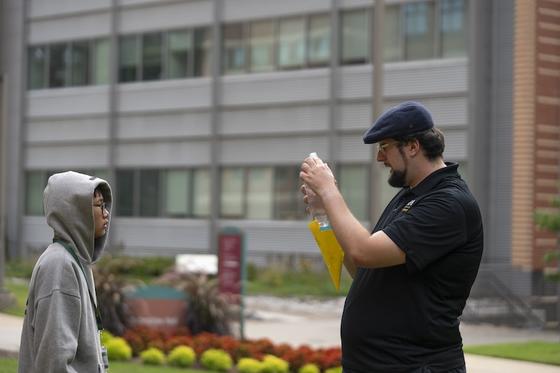
“MSEC started as a summer camp but has now also expanded into many different outreach activities and family events, such as Space Day, that cater to fourth through ninth grade students,” said Rob Parks, COS assistant director of MSEC.
“We’re hoping to be able to stay involved with these families as these kids age, so that hopefully we can encourage them to consider George Mason [when thinking about colleges],” said Parks.
Rising high school seniors Gwen Chaves and Gabby Whitefield and Rob Parks are Observatory tour guides. Chavs led the advanced camp on the Science and Technology Campus. Whitefield was the lead flight director, facilitating daily Astronomy and STEM-related lectures, activities, crafts, and demonstrations.
“A lot of the kids in the advanced camp are asking me about my experience in George Mason STEM and what it’s like to live on campus,” said Chaves. “They’re really curious about what kind of labs and facilities we have, which are cool questions to be able to answer. It’s exciting to teach them about what George Mason has to offer them later on in their academic careers.”
Engineering Is a Growing Field
Camps on engineering and related topics are always popular at George Mason, and there are a variety of programs on all three of the university’s Northern Virginia campuses for students looking to be inspired.
The CEC Office of Outreach, Student Success, and Engagement (OSSE) offers outreach activities that encourage creativity and nurture a passion for STEM from an early age. Outreach activities include the Fall STEAM Fest, the Spring into STEM Event, the STEM Summer Showcase, and the Engineering 4 Us All Program.
George Mason’s Exploring Renewable Energy Engineering Summer Camp, held at Mason Square is sponsored by Amazon Web Services. This camp, led by CEC professor Liling Huang, offered high school students a range of interactive science and engineering activities, including building a model town powered entirely by clean renewable energy.
Huang’s E2 Center for Energy Exploration will host an upcoming summer camp for high school students as well.
BioE-Buzz
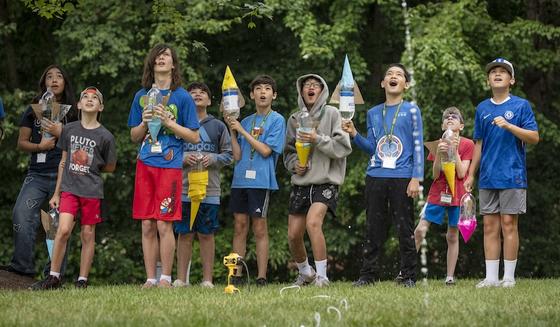
Carolyn Wilson, internship coordinator for the Bioengineering Department, worked with the department’s external advisory board, called the Alliance, to increase the pipeline of students coming into the department.
Through this initiative, Wilson created BioE-Buzz, a CEC summer camp for rising high school juniors and seniors.
“We have a number of campers who are interested in majoring in bioengineering based on what they learned and were exposed to during the camp, so that really encouraged us to expand our sessions this year from one to two weeks. We’ve also doubled the number of campers from our first year,” said Wilson.
The camp takes place on the Fairfax and SciTech campuses. The camp’s counselors, coordinators, and volunteers are George Mason students.
“This is our second year of BioE-Buzz, and we have the campus structured so that students spend their time getting to know what Mason has to offer. They have access to our Nanofabrication and EDGE facilities as well as the MIX,” said BioE Buzz camp director Khadija Zaidi-Rashid, PhD Bioengineering ’23.
Students will give presentations on what they learned and experienced at George Mason’s summer camps with a STEM End of Summer Showcase in August.

